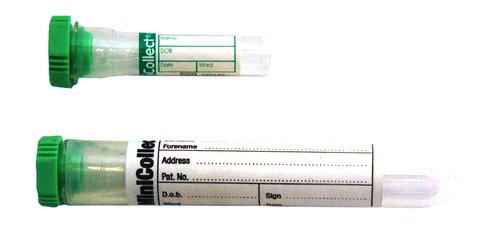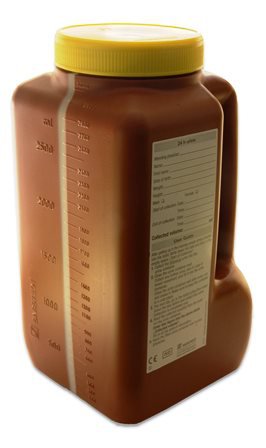Cortisol
Chemical Pathology
Notes
- Random cortisol (hydrocortisone) levels in blood have limited use due to the episodic nature of cortisol secretion, diurnal variation and effects of stress. Dynamic function tests are usually advocated when investigating adrenal function or the hypothalamic/pituitary/adrenal axis.
- Blood samples for an initial screen are best collected at 9am.
- The short Synacthen test is used to investigate possible Addison's disease (primary adrenal failure) . If hypopituitarism is suspected advise endocrine referral as an appropriate stress test may be required.
- Cushing's syndrome is a syndrome of glucocorticoid excess which includes exogenous steroid use, ACTH independent adrenal disease or ectopic ACTH.
- Cushing's disease specifically refers to Cushing's caused by ACTH secreting tumours of the pituitary gland.
- For investigation of possible Cushing's, either an overnight dexamethasone test or two separate 24 hour urine cortisol collections form a sensitive but non-specific initial screen. The latter can be performed in females receiving oestrogens e.g. oral contraceptive pill, however both false positive (obesity, depression, alcohol) and false negative (cyclical Cushings and biochemically mild disease) results occur with both tests.
- An endocrine referral is advised if index of suspicion is high or cyclical Cushings is suspected or for follow up of any abnormal results.
- Cortisol is a stress related hormone, and as a result very high levels (>1000 nmol/L) can be seen in acutely unwell patients or those in trauma.
- Patients need to be off oestrogen containing medication for 6 weeks prior to any serum cortisol level measurement.
Sample requirements
If patient on high dose biotin therapy (>5mg/day) collect sample at least 8 hours after the last dose.
For adults, blood taken into a 5mL gold top tube (rust top for the Acute Unit)

For children, blood taken into a 3.5mL rust top tube

For neonates, blood taken into a 0.8mL minicollect lihium heparin tube

For 24 hour urine cortisol, a complete 24 hour urine in a 3L brown collection bottle

For monitoring hydrocortisone replacement therapy: a day curve can be performed to assess adequacy of hydrocortisone therapy. Blood samples are normally taken prior to the steroid dose and 1 hour after the dose throughout the day.
Storage/transport
Send at ambient temperature to the laboratory. If unavoidable and clinically appropriate, both blood and urine samples can be stored refrigerated overnight.
Required information
Relevant clinical details including the reason for the request, time of sample, whether part of a day curve. Please especially record any Synacthen or dexamethasone given and current medication.
Turnaround times
Blood samples for cortisol are assayed locally at GRH. Results are normally available within 24 hours. The test can be ordered as an urgent request.
Urine cortisol requests are sent to King's College Hospital, London for analysis of urine free cortisol. Results are expected back within 2 weeks.
Reference ranges
For information on reference values in blood please contact the duty biochemist.
Patients receiving prednisolone, methylprednisolone or prednisone will have uninterpretable levels of serum cortisol because of cross-reaction in the assay system (Roche).
Estrogen containing medications, including the contraceptive pill and hormone replacement therapy, should be stopped for six weeks prior to measuring serum cortisol. This is because estrogen induces cortisol binding globulin (CBG) and leads to elevations in measured serum cortisol.
Pregnancy can also give elevated serum cortisol levels due to high CBG.
Urine cortisol reference range: <200 nmol/24h
Further information
To learn more about cortisol visit Lab Tests Online or access the Cortisol Monograph of the Association for Clinical Biochemistry and Laboratory Medicine, and/or the Urine Cortisol Monograph of the Association for Clinical Biochemistry and Laboratory Medicine.
Page last updated 05/02/2019